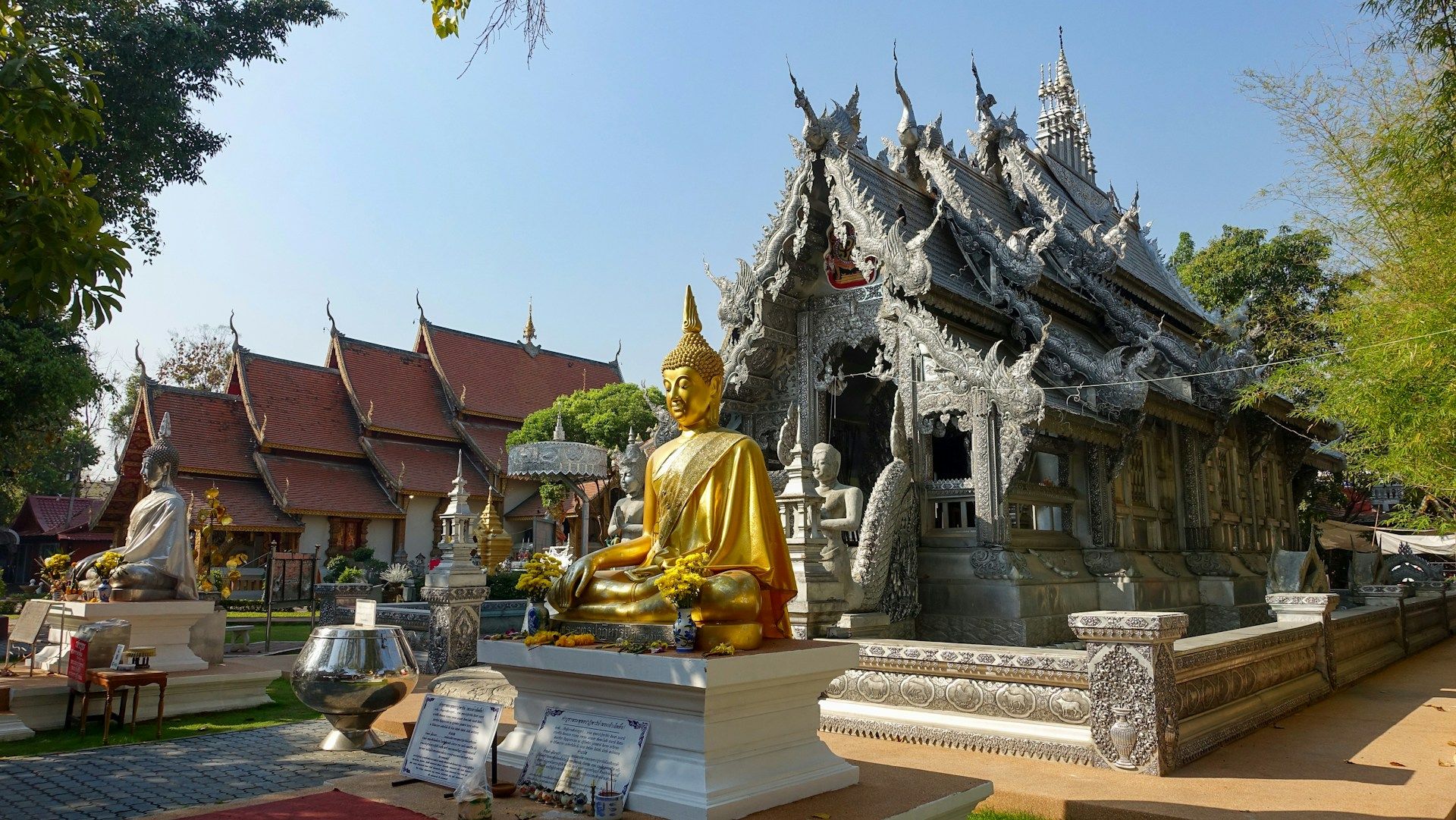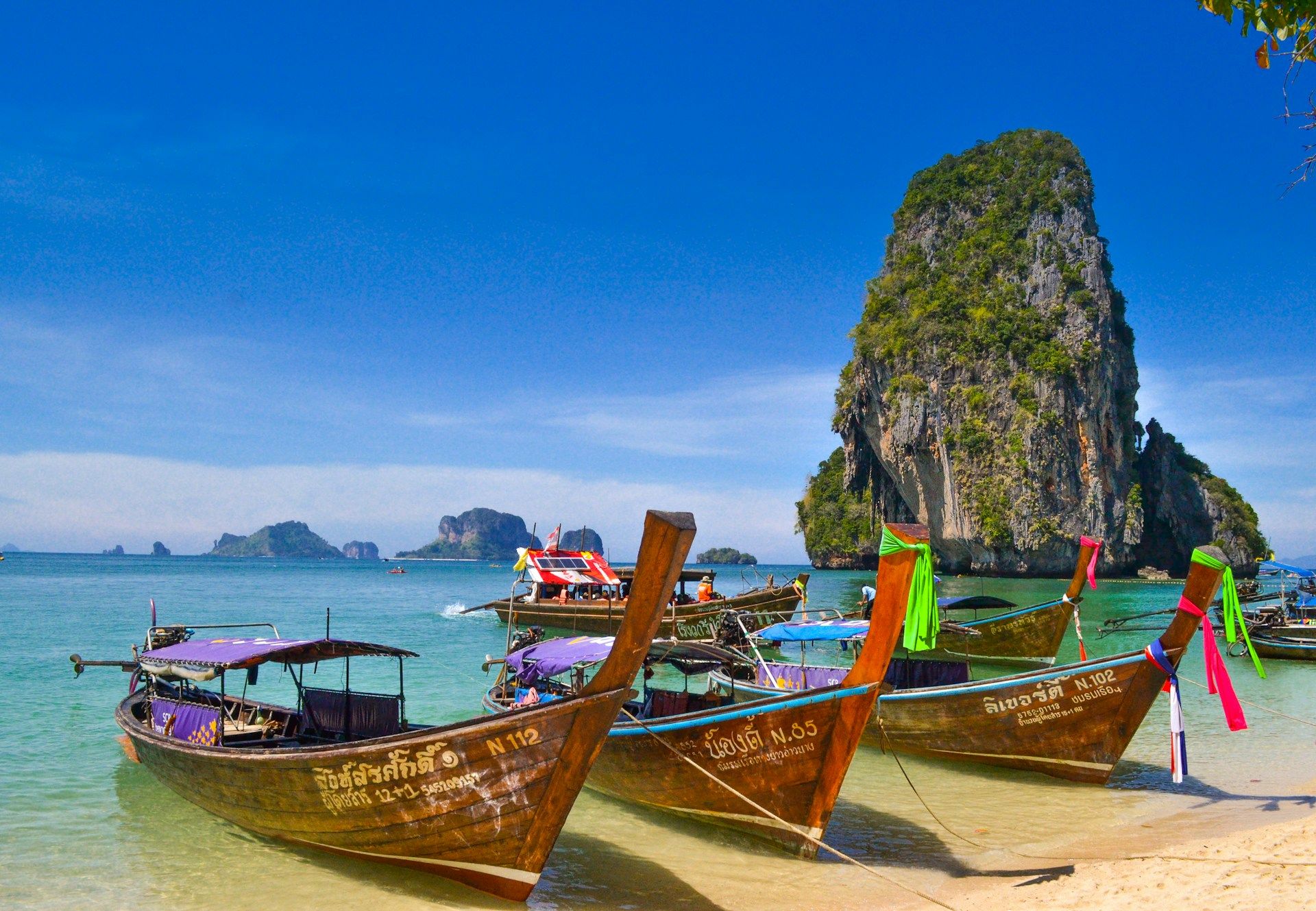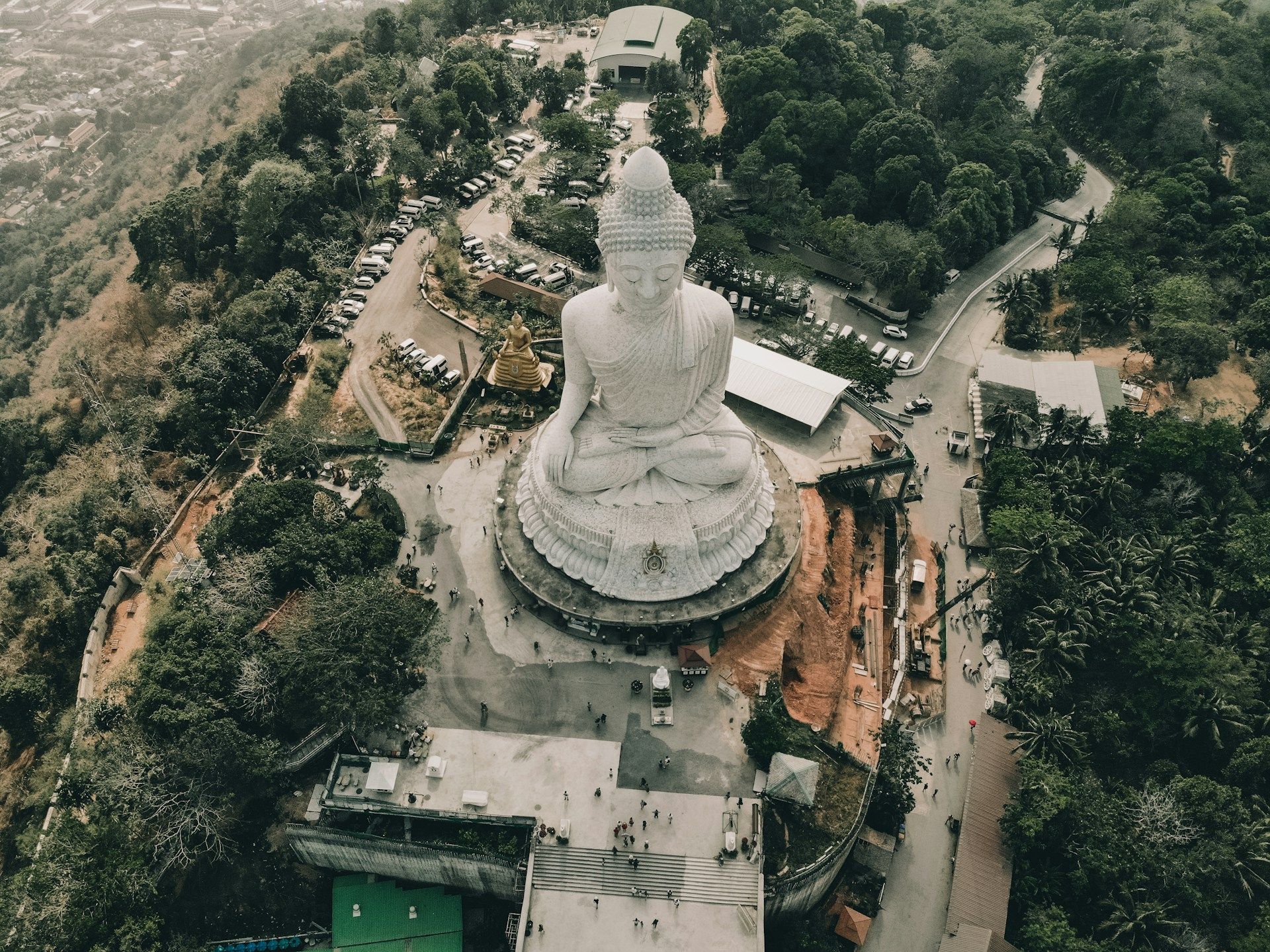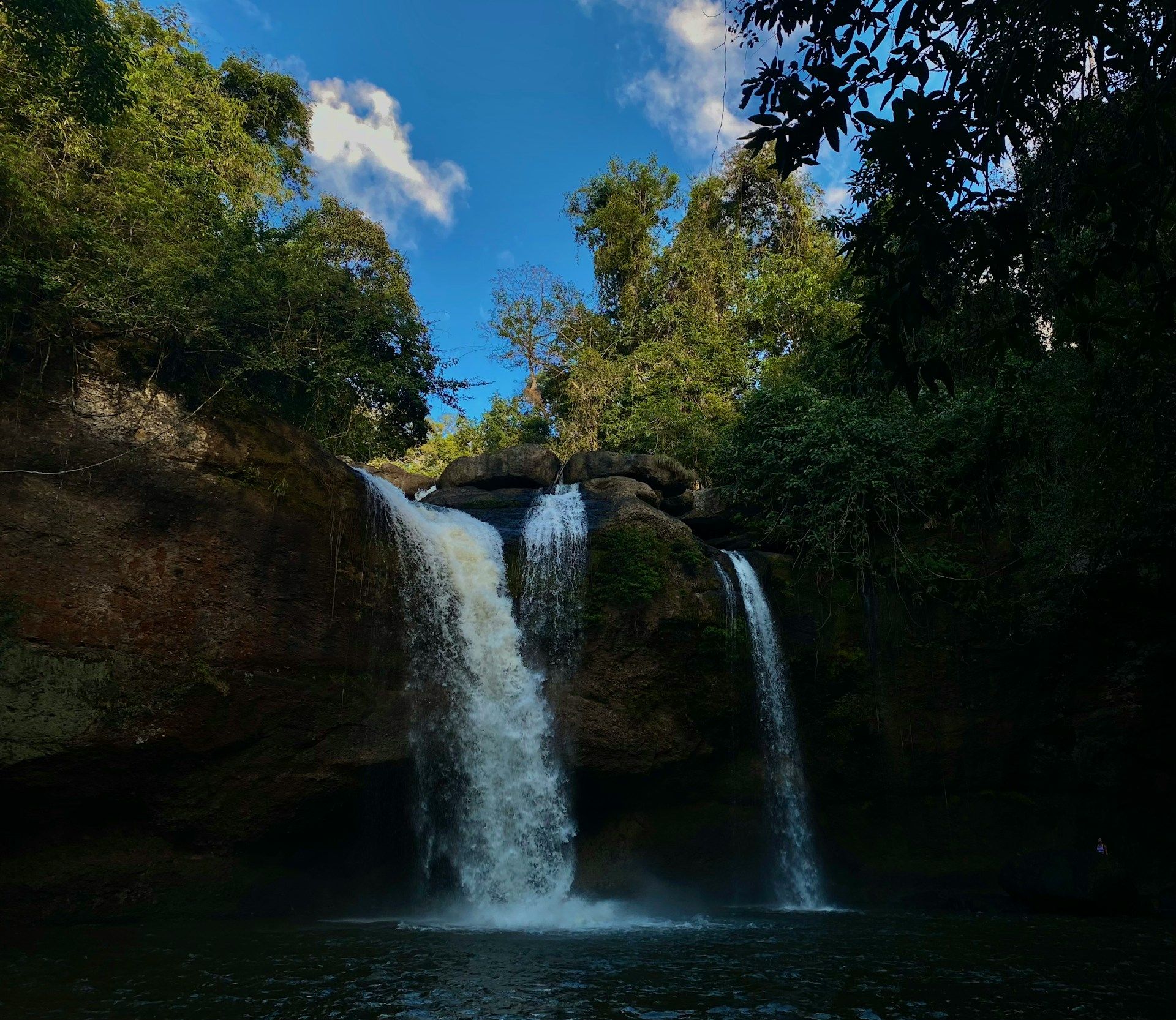Are you planning a trip to one of the most beautiful and enchanting countries in Asia: Thailand? One of the first things you should learn is what the weather is like throughout the year. Knowing the patterns, you can tailor your trip to enjoy the best of each season, and you’ll also be better prepared for the worst.
In this guide, we’ll break down each season, the best activities you can enjoy, and share essential packing tips. Plus, we’ll help you decide the best time to visit Thailand based on your travel style and interests. Let’s get started!

Picture by Jakob Owens on Unsplash
Thailand’s Seasons Explained
Unlike most European countries, Thailand doesn’t have the four “traditional” seasons. Instead, we’ll be discussing only three: hot, wet, and cool. Here’s a quick breakdown of each one, with a general guide of what to expect.
Hot Season
The hot season goes from March to May, and it’s the hottest time of the year in Thailand. The temperatures are extremely high, reaching 40°C on the hottest days. Additionally, the humidity is at its highest, further intensifying the thermal sensation and making it even more uncomfortable.
Generally, the hot season is not the best time to visit Thailand, but it does have some highlights worth mentioning. While the central cities like Bangkok or Chiang Mai are extremely hot, the coastal areas do enjoy cool sea breezes, making it a perfect time to explore them. Visit places like Phuket and Krabi, and enjoy the lovely beaches under the strong rays of the sun.
Wet Season
After the intense heat of the hot season, the humidity begins to rise exponentially, and the rains start pouring. This time of the year is also known as the monsoon season, and when we say that it rains, we mean it. At one minute, the sky can be perfectly blue and the day hot and sunny, and in the second, it’s all gray and it’s raining strongly. Luckily for you, the rain is more common during the afternoons and evenings, so you can still use the mornings for activities and exploration.
But these months are great to visit the countryside! With so much rain, the jungles are almost glowing, so green and lush, and the waterfalls are powerful and vibrant. It can cause flooding in some areas, but it’s still a great time for outdoor activities.
Cool season
As the year comes to a close, the weather becomes colder and more stable. This is the best time to visit Thailand, as you can walk around without sweating or getting wet from the rain. This change is more notable in the northern regions of the country, as the central and southern areas remain warm but are also more breezy.
It’s a great time to explore the cities, get lost in the endless streets, try local food, and admire the monuments. It’s also a good time for longer treks and outdoor activities, so take the opportunity to visit temples, markets, and travel from one city to the next, chasing festivals!
Winter is the Best Season to Visit Thailand
November marks the end of the rainy season, and it’s usually cited as the best month to visit Thailand. The weather is generally pleasant, with temperatures ranging from 25°C to 32°C, and lower humidity than in the previous season. If you want to explore the islands and beaches, don’t worry about the cold, as the area is still warm and inviting even in November. But the North regions are indeed colder.
During December, the weather remains pleasant and dry, with moderate temperatures, minimal rainfall, and abundant sunshine, making it ideal for sightseeing and beach activities throughout the country.
January and February are slightly cooler and drier, with temperatures ranging from 19°C to 31°C. The pattern follows that of the northern regions, which tend to be on the lower end, while the coastal areas remain warm. Generally, rainfall is rare, humidity levels are moderate, and a refreshing breeze often helps temper the tropical warmth.

Photo by Peter Borter on Unsplash
Activities and Events During the Cool Season
Winter is an ideal time to visit Thailand and enjoy a variety of activities and events, like festivals! In Chiang Mai, you can experience the magical Yi Peng Lantern Festival in November, where thousands of lanterns light up the sky. It’s one of the most magical and unique events in all of Asia.
Cultural travelers can also enjoy visiting the Doi Suthep Temple. This ancient site is situated on a mountain, from where you can get incredible views of the city of Chiang Mai. Take your time to explore it, and admire the intricate carvings on the walls and the beautiful golden stupas.
A unique activity to enjoy during the winter months is a street food and night market tour in Bangkok. It’s a great way to learn more about Thailand’s culture and get closer to the locals. Pass by Chinatown in Yaowarat to sample grilled seafood, pad Thai, roast duck, and exotic fruits. Then catch the weekend market in Chatuchak, where you’ll find over 8,000 stalls!
What to Bring for Your Winter Trip to Thailand
We’re calling it winter, but don’t expect to see snow. It’s still tropical weather, so pack light and bring practical items, like breathable clothing, t-shirts, shorts, and sundresses for warm days, along with a light jacket or sweater for cooler evenings, especially if you’re visiting the northern areas. As for footwear, comfortable walking shoes and sandals are essential for exploring cities and beaches.
Is Thailand’s Hot Season Worth It?
For the first month of the hot season, March, the heat is still manageable, especially in the coastal areas, but the UV index is high. The weather is humid, but rain is rare, only occasional, quick showers.
When we said that temperatures can become extreme during the hot season, we mainly mean in April. It’s Thailand’s hottest month with average temperatures ranging from 30°C to 40°C throughout the country. Northern areas, such as Chiang Mai, can exceed 40°C, while the coastal regions are slightly cooler, with an average of 32°C to 34 °C. Rainfall remains low, although brief showers may fall in southern areas.
By May, the weather is still hot, but the temperatures have begun to ease slightly. The humidity does increase, which makes the thermal sensation worse. As the rainy season comes closer, the rains start with uneven showers early on and heavier rain by the month’s end.

Photo by Evan Krause on Unsplash
Activities and Events During the Hot Season
If you’re traveling to Thailand during the hottest months, you’ll want to do activities that are refreshing, and what can be more fun and cool than island hopping in the Andaman Sea? The southern regions, such as Phuket, Krabi, and Koh Lanta, manage to stay a bit fresher even in the hottest summer thanks to the marine breeze. You can take a tour from any of them and go explore hidden coves, limestone cliffs, and turquoise lagoons. You can snorkel if you want, or rent a kayak!
Even with the intense heat, it’s a great time to explore Thailand, offering numerous interesting activities and excursions. You can visit Khao Yai National Park for hiking and have an opportunity to spot wildlife in the lush forests and waterfalls.
And cultural travelers can’t miss the Songkran Water Festival in April. It’s a highlight of the season, a celebration of the Thai New Year marked by nationwide water fights and festivities. The Ubon Ratchathani Candle Festival is always held in July, typically around Asalha Puja and the start of Buddhist Lent (Khao Phansa), which usually falls in mid-July. You can enjoy a rich cultural experience and exciting activities during the Thai summer!

Photo by Sumit Chinchane on Unsplash
What to Pack for Summer in Thailand
Remember, you’re preparing for intense sun, extremely hot weather, and high humidity. Pack breathable and lightweight clothes, such as lightweight t-shirts, shorts, and breathable dresses. Don’t forget to include swimwear for beach activities, a sun hat, sunglasses, and sunscreen for sun protection.
On your toiletries, don’t forget the insect repellent and the basic first-aid kit. A reusable water bottle and a lightweight rain jacket are useful for staying hydrated and handling occasional rain showers.
Thailand’s Monsoon: Is It the Worst Time to Visit?
After the hot and humid May, the rains start getting stronger and more frequent in June. The temperature does descend a bit, and there’s still plenty of sunlight and clear days to explore around.
The rainy season intensifies in July and August, with stronger rain, especially in the southern areas, near the sea. The landscape is at its greenest, and even with the chance of a strong shower, it’s a great time to explore the wilder side of Thailand.
September is the wettest month, with southern cities like Phuket experiencing extreme rains and strong waves. So be careful if you decide to go swimming there. By October, the weather starts to transition

Photo by Miltiadis Fragkidis on Unsplash
Activities to Enjoy During the Rainy Season
During Thailand’s rainy season, there are plenty of fun activities and events to enjoy. Visit indoor attractions, such as Bangkok’s renowned museums, including the Jim Thompson House and the Museum of Siam, to learn about Thai culture and history. You can also make good use of your time and visit shopping malls like MBK and Siam Paragon, where you can get cute and unique souvenirs, as well as eat in great restaurants.
If you want to try something new, you can enjoy the season and join a wellness retreat and a Thai spa. Both options offer great indoor comfort and are excellent ideas for a vacation. You have to try the Thai massages and the herbal compress therapy, but there’s also yoga for the more active folks, and meditation retreats for the spiritual travelers.

Photo by Manahil Ilyas on Unsplash
What to Bring for Your Monsoon Travel in Thailand
For monsoon travel in Thailand, pack wisely to stay comfortable and dry. Bring lightweight, breathable clothing, such as t-shirts and shorts, and consider a lightweight rain jacket for sudden showers.
Comfortable walking shoes or sandals with a good grip are essential for wet conditions, but just make sure they dry quickly. Don’t forget a hat and sunglasses for sun protection when the rain clears. A reusable water bottle and umbrella are key, as well as insect repellent.
FAQs About Visiting Thailand Any Time of Year
How to Stay Connected in Thailand?
When visiting Thailand, it’s essential to stay connected and informed. One way to easily access real-time local information and stay in touch with friends is by using a Yoho Mobile’s free eSIM trial and get instant access to mobile data in most countries. No SIM card, no contracts, just a quick setup, and you’re online in minutes. If you want to get your eSIM plan afterwards, use the code YOHO12 at checkout for a 12% discount!
What is the worst time to visit Thailand?
The worst time to visit Thailand is during the monsoon season, from June to October, due to heavy rainfall and high humidity. September and October are particularly wet, with frequent flooding and strong waves affecting coastal areas like Phuket and Krabi. Additionally, the hot season from March to June can be unbearable, with high temperatures and humidity, especially in Bangkok.
Is November ok for visiting Bangkok?
Yes, November is the best time to visit Thailand, especially Bangkok. The weather is warm but not too hot, with temperatures ranging from 23°C to 31 °C. Rainfall decreases, making it a dry and comfortable month. However, it’s peak tourist season, so booking accommodations and flights in advance is recommended.
How long will you be in Thailand?
For a quick taste, 7-10 days is enough to explore one or two areas, such as Bangkok or Phuket. For a more immersive experience, it is recommended to spend two weeks visiting multiple regions, such as Chiang Mai and the islands. If you want to explore extensively, consider staying for a month to discover hidden gems and experience Thai culture without feeling rushed.
How cold does it get in Thailand
In the north and northeast, temperatures can drop as low as 12°C during winter, with mountain peaks experiencing even colder conditions. In Bangkok, temperatures rarely fall below 17°C, but recent cold snaps have seen lows of around 15°C to 16 °C.
The lowest recorded temperature in Thailand was -1.4 °C in Sakon Nakhon. However, Thailand’s climate generally remains warm, with average temperatures ranging from 18°C to 38°C across the country.
